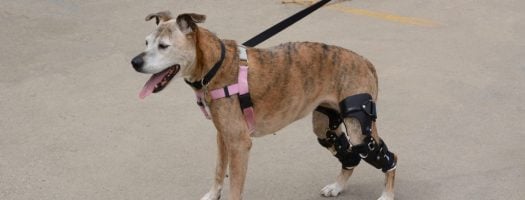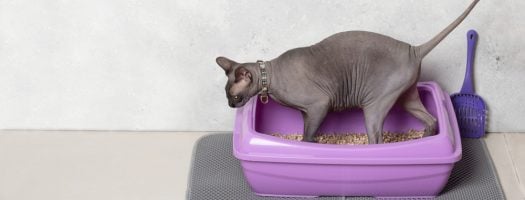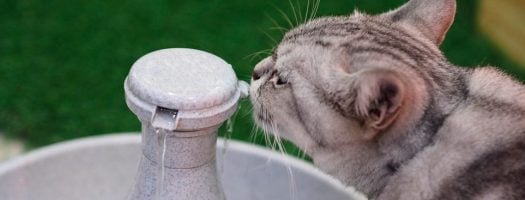The 8 Best Water Bottles for Guinea Pigs in 2026
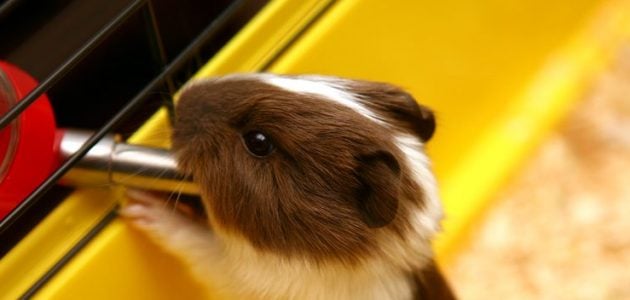
“Which animal is the cutest” is an inherently subjective question with no clear-cut, definitive answer, but guinea pigs (or “cavies,” to use their proper scientific name), certainly are top contenders. Plump and fuzzy, with an affectionate and curious nature and an assortment of adorable squeaks and chortles, there’s nothing not to love about guinea pigs.
A low-cost, low-maintenance pet suitable as first pets for children or folks residing in cramped studios, guinea pigs nevertheless require responsible care and attention. One aspect of such care is regular access to safe, clean drinking water.
- Factors to Consider in Guinea Pig Water Bottles
- Top 8 Best Water Bottles for Guinea Pigs 2026
- 1. Best Overall Water Bottle: Choco Nose H128 No Drip Water Bottle
- 2. Best Budget Water Bottle: Lixit Wide Mouth Water Bottle
- 3. Best Premium Water Bottle: Lixit Glass Tube Water Bottle
- 4. Best Glass Water Bottle: Living World Eco + Water Bottle
- 5. Best High Capacity Water Bottle: RentACoop No Drip Water Bottle
- 6. Most Durable Water Bottle: Lixit Chew Proof Glass Water Bottle
- 7. Best Plastic Water Bottle: MidWest Critter Ville Animal Water Bottle
- 8. Best Low Capacity Water Bottle: Kordon/Oasis Bell Bottle
- Complete Guide to Guinea Pig Water Bottles
- Final Thoughts
Factors to Consider in Guinea Pig Water Bottles
A first-time guinea pig owner may be surprised by how many different makes, models, and styles of guinea pig or small animal water bottles are available for purchase. Let’s go over the main factors now. If you know what you’re looking for and want to go straight to the products, check out our list.
Material
Most guinea pig water bottles are made from either plastic or glass, each of which comes with its own set of advantages and disadvantages. Plastic bottles are cheap, lightweight, and easy to find, but are a bit tricky to clean properly. If you choose to buy a plastic guinea pig water bottle, ensure it’s BPA-free – BPA is an industrial chemical used in the manufacturing of some plastics that may cause health problems if it seeps into food or water.
Glass bottles are significantly more durable than plastic – so long as you don’t drop them – and are easier to clean. Most glass guinea pig water bottles are dishwasher safe. While plastic bottles can potentially leach chemicals or bacteria into the water, glass is non-porous so there is a much lower likelihood of this occurring. Glass is also the eco-friendlier choice, as it is a 100 percent recyclable substance. However, glass bottles will set you back quite a few Washingtons in comparison to their plastic counterparts.
Nozzles
Guinea pig water bottles come with attached nozzles that vary in size and shape. Nozzles are also sized differently depending on the size of the animal(s) intended to drink out of the bottle – hence, you can’t cheap out and buy your cavy that dog water bottle that just so happens to be on sale at Wal-Mart. The nozzle’s diameter will be too wide for them to get their little mouths around. Some nozzles are detachable and therefore reusable – so long as you have a compatibly sized plastic bottle available.
Capacity
A water bottle won’t do your pigs much good if it doesn’t hold enough water to keep them happy and hydrated throughout the day. On average, a single guinea pig will drink 3.4 oz of water per day, although the specific amount they drink will naturally vary day by day. Don’t be afraid to buy more than one bottle if you have a lot of guinea pigs to care for.
Durability and Maintenance
While no guinea pig water bottle lasts forever, some are more durable than others. Guinea pigs love to chew on things, and unfortunately, that includes their water bottles. This is another reason to avoid BPA-including plastic bottles, as your cavies may ingest some by swallowing plastic fragments. As a rule, glass bottles hold up better to the weathers of time – and your guinea pigs’ teeth.
Cleaning is an essential component of guinea pig water bottle maintenance. Glass bottles are usually dishwasher safe and are a cinch to clean even when they aren’t. Plastic bottles are vulnerable to black mold growth and persistent odors, and so require more regular and vigorous cleaning. An essential purchase for any nascent cavy owner is a bottle brush – the tool used to scrub down the bottom, rims, and sides of guinea pig water bottles. Later on, we’ll describe the best guinea pig water bottle cleaning methods.
Leakage
One of the most important criteria for evaluating the quality of a guinea pig water bottle is the amount of leakage – or lack thereof. Nozzles play a key role in the amount of leakage produced by a bottle as a well-made product will resist the effects of gravity and water pressure while a shoddy one will fail.
Without further ado, here is our list of the best guinea pig water bottles on the market. We have a further guide after our list too which details how to get most out of your water bottle.
Top 8 Best Water Bottles for Guinea Pigs 2026
1. Best Overall Water Bottle: Choco Nose H128 No Drip Water Bottle
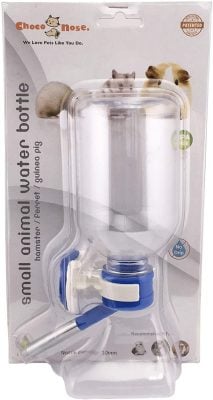
Editor’s Rating:
Why we like it: This moderately priced water bottle is the best of the bunch, boasting a patented, leak-proof nozzle. It’s also easy to attach to your guinea pigs’ cage.
Quick Facts
- Material: Plastic
- Capacity: 11.2 oz
- Product Dimensions: 7 x 2 x 4 inches, 2 oz
The Choco Nose H128 is one of the most popular guinea pig water bottles on the market, and for good reason. Listed at an affordable price point, the bottle includes a removable 10mm leak preventive nozzle sized for guinea pigs, hamsters, and other small animals, and compatible with all PET bottles. Said compatibility enables an easy transfer of Choco Nose H128’s superior nozzle from an old bottle to a new one, or the default bottle to a bigger bottle. Note that the bottle’s relatively low capacity may require frequent refilling if you have a lot of pigs, or they’re particularly thirsty. If high capacity is a must-have, you might like RentACoop No Drip Water Bottle, a high-quality water bottle that holds 32 oz.
Installation
The H128 comes with a screw-on bracket that you can mount directly on the bars of your pigs’ cage. The bracket easily snaps on or off, enabling quick and easy refilling and cleaning. For greater stability, you can screw or hammer the bracket onto the wall or floor.
Leakage
Choco Nose H128 lives up to the model’s promised no-leak capabilities, due to its patented nozzle design. The ball bearing inside the nozzle is responsible for holding water inside the bottle and off your floor and only works as intended if it’s correctly oriented. Accomplish this by tapping it in and out of place before and after refills and/or cleaning.
Pros
- The patented leak-proof nozzle keeps cage floors mess-free
- The nozzle is detachable and can be quickly reinstalled to a new PET bottle
- Easy, versatile installation
- Delivers great value at a low cost
Cons
- Low capacity necessitates regular refills
2. Best Budget Water Bottle: Lixit Wide Mouth Water Bottle
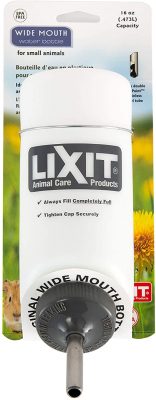
Editor’s Rating:
Why we like it: One of the cheapest models available and also one of the best, this product’s wide mouth allows easy cleaning and fast refilling.
Quick Facts
- Material: Plastic
- Capacity: 16 oz, also available in 8 and 32 oz sizes
- Product Dimensions: 7.5 x 3.75 x 3.75 inches, 2.4 oz
As the cheapest guinea pig water bottle on our list, the Lixit Wide Mouth’s price is far from the only selling point. The bottle’s titular wide mouth makes it a breeze to clean and refill. Wide Mouth is sold in 8 oz and 32 oz sizes in addition to the default 16 oz and features optional, personalized decorative patterns such as baby sharks or teal polka dots. The Lixit Wide Mouth is built from thick, sturdy BPA-free polyethylene plastic, which will resist chew damage and increase shelf-life.
Installation
Wide Mouth’s wire mounting bracket is a simplistic but effective design that should keep the bottle securely in place whether you set it up on the inside or outside of the cage. However, if you prefer screw brackets for wall mounting, this bottle won’t suit your purposes.
Leakage
Leaks can be prevented by correctly forming a vacuum seal after adding water to the bottle. Do so by filling the bottle to the brim, mounting it, then tapping the ball bearings so they slide into place. The ball bearings are essentially an opening/closing mechanism; when a guinea pig nudges the bottom ball bearing the vacuum seal will break, enabling water flow for as long as the guinea pig keeps its mouth on the ball bearing. However, vacuum seals aren’t perfect, and some water will inevitably drip out.
Pros
- Premium quality at a budget price
- The wide, cylindrical bottle opening facilitates rapid and easy cleaning
- Made from durable, chew-resistant plastic
- Customizable water capacity and cosmetic design patterns
Cons
- Inconsistent vacuum sealing will cause leakage
- Not wall-mountable
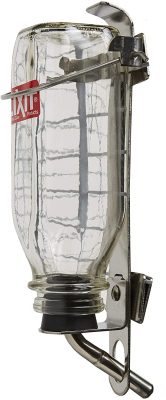
Editor’s Rating:
Why we like it: While admittedly pricy, this bottle justifies its price point via its durability, easiness to clean, and multiplicity of uses.
Quick Facts
- Material: Glass
- Capacity: 32 oz
- Product Dimensions: 5 x 5 x 19 inches, 2.2 lbs
The Lixit Glass Tube is expensive for a guinea pig water bottle but expect quite a bit of bang for your quite a lot of bucks. This high capacity water bottle is marketed for birds, but the nozzle diameter is small enough that your cavies will have no trouble drinking from it. Cleaning will never be a hassle, as you can easily disassemble the bottle and pop the parts in the dishwasher. Glass bottles are generally sturdy, and the Lixit Glass Tube is no exception – even a big macaw’s beak won’t put a dent in the glass, so your guinea pigs’ nibbles certainly won’t either.
Installation
The Lixit Glass Tube comes with a conventional wire mounting bracket, but note that the water tube is relatively large, so ensure that the bars on the cage are wide enough for it to fit through. This model isn’t wall-mountable, but does work nicely with kennels and animal carriers, which will come in handy should you ever happen to take your pigs on a long car ride.
Leakage
This guinea pig water bottle relies on a multiple ball bearing vacuum sealing system. While vacuum seals prevent water loss when implemented correctly, they are less secure than the stopper/nozzle combos of other products, for example, the Choco Nose H128, which features a patented no-leak nozzle.
Pros
- Incredibly sturdy and chew-resistant
- The glass is very easy to clean and will come out just fine if you run it through the dishwasher
- Suitable for birds, ferrets, and rabbits as well as guinea pigs
Cons
- Very expensive compared to other guinea pig water bottles
- Vacuum seal systems inevitably have some leakage
- Not wall mountable
4. Best Glass Water Bottle: Living World Eco + Water Bottle

Editor’s Rating:
Why we like it: An eco-friendly water bottle that’s drip resistant, dishwasher-safe, and marked with a water level indicator.
Quick Facts
- Material: Glass
- Capacity: 12 oz, also available in 26 oz size
- Product Dimensions: 14 x 5 x 3 inches, 12.64 oz
The Living World Eco + Water Bottle is a great pickup for anyone who strongly prefers glass guinea pig water bottles over plastic. No need to fret over widening your carbon footprint with this purchase – it’s made from 100 percent recycled glass. Living World is just as durable and chew-proof as you rightly expect from a glass bottle. Don’t anticipate this bottle taking much damage from wear and tear – so long as you don’t drop it by accident. And that isn’t even as much of a disaster as it could be – this is one of the cheapest bottles on our list, usually available for under $10. The glass is stamped with a series of water level indicators, making it a cinch to time refills.
Installation
The bottle is packaged with an accompanying spring and hangar attachment, perfect for latching on to your pigs’ cage. Unfortunately, this guinea pig water bottle isn’t intended for wall mounting. If your cage layout is such that wall mounting is most convenient, a good alternative is RentACoop No Drip Water Bottle.
Leakage
Living World’s double ball bearing design does a terrific job at holding water in the spout – maybe too good of a job. Sometimes the nozzle doesn’t dispense water even when your guinea pig moves the lower ball bearing. Keep an eye on your cavy’s drinking habits to ensure this isn’t an issue. And if it seems to be, you can compensate by filling the bottle up a bit less, as this will preserve an air bubble that facilitates water dispersal.
Pros
- A superior guinea pig water bottle priced at under $10
- Eco friendly – produced from recycled glass
- Dishwasher safe
- Convenient water level indicators
Cons
- Doesn’t always dispense water when it’s supposed to
- Not wall mountable
5. Best High Capacity Water Bottle: RentACoop No Drip Water Bottle
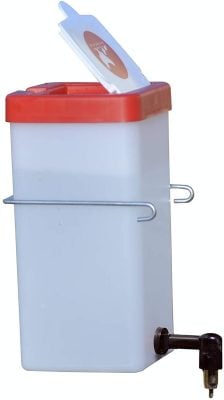
Editor’s Rating:
Why we like it: Containing one liter of water at max capacity, this bottle will keep your precious pigs hydrated for days. Its leak resistance and chew-proof exterior offer additional value.
Quick Facts
- Material: Plastic
- Capacity: 32 oz
- Product Dimensions: 3.5 x 3.5 x 7 inches, 4.8 oz
The larger your guinea pig herd, the more water you need to provide at one time. RentACoop No Drip Water Bottle is an excellent choice for any cavy-lover with a living room consisting of 2/3 guinea pig territory, and 1/3 whatever else they can fit. Size isn’t everything, however, and RentACoop doesn’t stop there. Its water filter inspired shape promises easy refilling and easy cleaning due to the wide, removable top opening.
To be sure, this bottle is not a practical choice for folks with one or two guinea pigs. The water will turn warm and brackish long before your pigs finish it, so you may prefer a smaller bottle like our best overall choice Choco Nose H218 or the similarly designed MidWest Critter Ville.
Installation
RentACoop is suitable for multiple cage types and multiple installation orientations. This model is wall mountable and fixable to both the inside and outside walls of your guinea pigs’ cage. Regardless of your installation inclinations, the process will be simple, as the provided spring clips and wire clips are easy to adjust.
Leakage
RentACoop is lower on our list than it could be due to its inconsistent leakage prevention. The bottle gradually develops a propensity to drip, akin to a leaky faucet. However, this guinea pig water bottle does have a two-year warranty, which balms the sting to a certain extent.
Pros
- 32 oz capacity is perfect for folks with a lot of guinea pigs to look after
- Filter style construction eases cleaning and refilling
- Simple and customizable installation
Cons
- Guinea pigs need fresh, cool water, so a bottle of this size is excessive for folks with only one or two cavies
- Frequent leakage leaves owners a need to clean they didn’t expect
6. Most Durable Water Bottle: Lixit Chew Proof Glass Water Bottle

Editor’s Rating:
Why we like it: While this guinea pig water bottle’s best quality is its chew-resistance and durability, it’s also easy to clean and leak-resistant.
Quick Facts
- Material: Glass
- Capacity: 12 oz
- Product Dimensions: 3.6 x 3.4 x 10.8 inches, 12.48 oz
The Lixit Chew Proof Glass Water Bottle is notable for its durability. Usable for squirrels, chinchillas, and chipmunks, as well as guinea pigs, none of these strong-toothed critters can damage this bottle. Note that this guinea pig water bottle, like most glass guinea pig water bottles, is dishwasher safe, so cleaning is nothing to fret over. Its low water capacity, however, limits its utility for folks caring for a large herd.
Installation
This guinea pig water bottle is easily fixed to either the inside or outside of any wire cage, via the included spring clips. To guarantee your bottle is properly positioned for guinea pig hydration, fill it up, and tap the ball bearing. If this creates air bubbles, then your Lixit Chew Proof is correctly installed.
Leakage
While not necessarily prone to leakage, this product does need a bit of finagling to ensure true protection. First off, you must completely dry the bottle rim as well as the stopper – moisture will complicate this process because it will make the parts trickier to handle. The screws can be a bit wonky, so take care to position them perfectly straight. Once you’ve done so, leaking shouldn’t be much of a problem.
Pros
- Exceptionally durable, chew-proof bottle
- Dishwasher safe, and therefore easy to clean
- Versatile cage attachment capabilities
Cons
- The low water capacity won’t suit the needs of some herds
- The complicated process to limit bottle leakage may not be worth the effort
7. Best Plastic Water Bottle: MidWest Critter Ville Animal Water Bottle
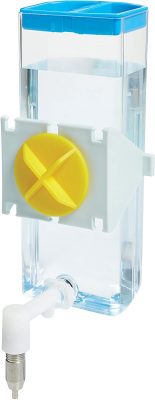
Editor’s Rating:
Why we like it: A water filter-esque guinea pig water bottle that’s intended for use with the manufacturer’s line of small animal cages, but will attach to nearly any.
Quick Facts
- Material: Plastic
- Capacity: 14 oz
- Product Dimensions: 75 x 3.14 x 7.59 inches, 3.52 oz
Made from plastic – hold the BPA – the MidWest’s Critter Ville Animal Water Bottle is a water filter style bottle with a convenient removable plastic top. In addition to the obvious ease this layout adds to refilling, the wider opening also makes it much easier to clean. The stainless-steel drinking spout is durable, easy to clean, and chew-proof. Although designated a “medium” sized bottle, 10.14 oz might not be enough for your herd. If you’re a fan of the filter style but can’t justify the low capacity, check out the RentACoop No Drip Water Bottle, which is designed similarly but holds much more water.
Installation
While designed to attach to MidWest animal cages, getting this water bottle to work with your personal setup shouldn’t prove much of a challenge. The accompanying plastic screw top should fix the bottle securely to any store-bought wire cage – we can’t guarantee it will fit something handmade. The packaging also includes suction cups, should you opt to house your guinea pigs in an aquarium instead of a cage.
Leakage
The Critter Ville Animal Water Bottle falls short when it comes to leak prevention. With repeated use, the nozzle loosens, which leads to a lot of dripping. You’ll have to have a firm arm to succeed in tightening it fully.
Pros
- The water filter shape simplifies cleaning and refilling
- Includes extra components for installation with other housing types
- Chew-proof drinking spout
Cons
- Prone to minor leakage
- Low capacity won’t be sufficient for many guinea pig owners
- Not compatible with handmade cages
8. Best Low Capacity Water Bottle: Kordon/Oasis Bell Bottle
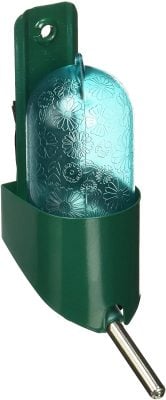
Editor’s Rating:
Why we like it: Perfect for single-pig owners, or anyone hard up for space. The bottle’s beautiful design adds cosmetic appeal.
Quick Facts
- Material: Plastic
- Capacity: 4 oz
- Product Dimensions: 1 x 1 x 1 inches, 0.8 oz
Sometimes you just don’t need that much water. Perhaps you only own one guinea pig – which we recommend against, incidentally, or maybe you need to crash in a friend’s tiny spare room, and so understandably can’t justify a big cage and its accompanying big water bottle.
These are the times that call for a Kordon/Oasis Bell Bottle, the low capacity guinea pig water bottle of choice for anyone who needs one. Guinea pigs need roughly 3.4 oz of water per day, so if you own more than one pig, expect to refill this bottle frequently. This bottle is easily the most aesthetically pleasing on our list, possessing a beautiful emerald base and the attractive titular bell-shaped bottle.
Installation
This product’s so-called “hanging guard” is designed to attach to very small pet cages as well as aquariums. Although it achieves its designated purposes, that will be no use to folks with more pigs and larger cages. Hence, this model’s utility is limited to only pig owners.
Leakage
While the Bell Bottle is relatively leak-resistant, this is dependent on proper manipulation of the product’s screw mechanism. This is no easy task, as the nozzle is loose enough that it may slip back out of place.
Pros
- This is the best option for only pig owners
- It’s easy to install, assuming you have a small cage or an aquarium
- The design is aesthetically appealing
Cons
- This model lacks the necessary capacity for most guinea pig families
- The installation mechanism will not work for small cages
- It will take effort on your part to minimize leakage
Complete Guide to Guinea Pig Water Bottles
Pet ownership is an enjoyable and emotionally rewarding experience, but it’s also a responsibility. You are caring for another life after all. Guinea pigs are certainly one of the easier animals to look after – hence why they’re often starter pets for adolescents.
That said, it’s an absolute necessity that prospective cavy owners thoroughly research guinea pig behavior, environmental preferences, nutritional requirements, and housing needs. We’ve prepared some information on those topics in this section.
Caring for Your Cavy
Guinea pigs are herd animals, so we strongly recommend you always have at least two. In fact, in Switzerland it is illegal to own just one guinea pig – they can die of loneliness, after all. There is no such law in the USA, but it’s still preferable you adopt multiple pigs – simply because they’ll be happier with friends than all alone. Once you’ve decided how many cavy cuties you plan on bringing home, the next step is to prepare a comfortable space for them to live in.
Housing
Never house guinea pigs outdoors – they’re very sensitive to temperature fluctuations and will be too exposed to predators. Instead, identify an open area in your residence that is out of direct sunlight, but still well lit, and put your cage there.
Cages must provide at minimum two square feet of smooth ground per pig, as well as multiple entrances and places for your pigs to hide. If you own additional (non-cavy) pets, then you’ll want to include a secure lid to keep your pigs protected. Guinea pigs are prey animals, and if even your other furry friends aren’t inclined to hurt them, they’ll be terrified regardless.
Bedding is essential, with hay, fleece, wood shavings, and paper products all good options. Cotton towels are a popular bedding pick as they effectively absorb urine, are reusable when subsequently washed, and guinea pigs love relaxing on their soft surfaces.
That said, this strategy will make every day a potential laundry day, depending on your pigs’ bathroom habits, so a mix of cotton with hay or fleece is a prudent alternative.
Guinea pigs love to explore, so be sure to give them regular floor time. Never leave them unsupervised, however, as they may hurt themselves, or chew on wires, drapes, or whatever else takes their fancy.
Keep your cavies away from high spaces like tables or sofa arms – they’re scared of heights and might die or be seriously injured if they fall or jump off.
Time to put them back in their cage? Keep in mind, there are right ways and wrongs way to hold guinea pigs. Cavies are fragile creatures, so grip gently with both of your hands.
For example, wrap one hand around their chest and a foreleg, while supporting their hindquarters with your other. The more you (correctly) handle your pigs, the more they’ll trust you, and so they won’t squirm as much, if at all.
Diet and Hydration
Guinea pigs subsist on a vitamin and mineral-rich diet of protein-filled pellets and fresh veggies. Pellets are the guinea pig analogue of commercially produced dry food for dogs and cats. Guinea pig pellets aren’t very exciting, but they’re chock-full of health-sustaining nutrients, and your guinea pigs will dine on them with no complaints. (Is there a lesson there for humans? Perhaps.)
Note that rabbit pellets, hamster pellets, or any other non-guinea pig pellets will not suffice – each species has separate dietary needs, and their equivalent pellets are prepared with that in mind.
Much like people, guinea pigs have individual taste preferences when it comes to food. While you should always provide your pigs with a good spread of fruit and veggies, take notice of which pigs like which produce.
There’s no reason to buy cucumbers for your cavies if neither one likes them. Guinea pigs are susceptible to scurvy, so you’ll need to give them vitamin C supplements if they don’t get enough from their diet. You should ensure your guinea pigs have fresh timothy hay at all times. Hay aids in wearing down their teeth and promotes intestinal health.
Guinea pigs will drink a daily average of 3.4 oz of water, but the exact amount they consume depends on several factors. For example, if your piggy dines on a generous serving of just-rinsed spinach, he’ll receive enough moisture that he may not get thirsty for a while. And be mindful of the temperature of your cavies’ drinking water – if it’s too warm, it won’t be to their taste, so they won’t drink very much.
Guinea Pig Water Bottle Best Practices
We’ve previously discussed the types of water bottles available for purchase, but let’s examine them in greater detail. Guinea pig water bottles hold several distinct benefits over generic pet water bowls. Active and energetic as they are, guinea pigs will easily knock over water bowls, or taint the water with chewed up bedding or fecal discharge.
Water bottles have a height advantage. Speaking of height, you’ll need to affix your chosen water bottle at the appropriate level enabling your pigs to drink from it. Slightly above head level should function perfectly.
Be observant and take care that they can reach the spout with their mouths. How many pigs you own determines the number of bottles/water capacity of said bottles required. Own a large herd? We suggest you acquire RentACoop No Drip.
Own just a pair? Consider our best overall choice, Choco Nose H128.
An often overlooked but critically important factor is the water bottle’s orientation relevant to other necessities in the cage. You don’t want to position your bottle such that any leaks will drip onto food bowls, or your pigs’ sleeping spaces.
It’s also worth being mindful of the potential temperature impact on the water bottle: Is it under direct sunlight? Is it close to an open window? Neither is desirable.
Also, it might be worth it to buy reserve water bottles – perhaps your current bottles are in need of deep cleaning, or suddenly break down. You don’t want your pets to suffer while you sort out the situation, so prepare in advance.
How to Properly Clean Your Guinea Pig Water Bottle
While glass bottles like our favored Living World Eco + Water Bottle are quickly cleaned via dishwashers, owners of other bottle types will need to apply more elbow grease. Regardless of which bottle you own, however, you should clean it daily – you don’t want your pigs to drink up bacteria with their H20. Allow us to describe our recommended process for perfectly cleaning plastic bottles.
To begin with, spritz a bit of hot sink water into your (uncapped) bottle. Chase it with dish soap, then fasten the cap back on. Shake vigorously – as you would a cocktail – then remove the cap.
Now is your bottle brush’s time to shine – insert it through the opening and scrub the interior. And don’t forget the spout and the nozzle – scrub those as well. Discard the remaining soapy liquid but scan your bottle again – you may have missed a spot.
Confronted by the ugly sight of black mold on the rims of your beloved cavies’ bottles? First, fill your sink with hot water and dish soap, then drop in the mold afflicted bottles.
Scrub the bottles thoroughly with your bottle brush, taking care to reach every crook and cranny, then rinse the bottles with more hot water, and set them aside to dry.
Now, fill the bottles with a mixture of 2/3 hot water, and 1/3 white vinegar. Let this mixture do its work overnight, then dump out the contents and once again wash out the bottles with soap and hot water.
Your final step is to rinse these bottles out until they’re soap and vinegar free – don’t want the pigs’ drinking any of that.
Guinea Pig Health and Behavior
Guinea pigs love to chew. The sides of their cage, their bedding, and yes, their water bottles – they chew it all. (Hence, our recommendations for chew-resistant bottles like Lixit Chew Proof Glass Water Bottle, or Living World Eco + Water Bottle.
But why do they do it? For several reasons. Firstly, to wear down their teeth. Guinea pigs’ teeth grow continuously, and the longer they get, the more uncomfortable they are for the pig in question. They might also just be bored – perhaps let them out for some floor time?
Guinea pigs are eccentric little furballs, so it’s sometimes difficult to determine if odd or unusual behavior is a sign of medical distress, or merely an innocuous personality quirk.
Deviating from standard behavioral routines – for example, if Sid the Pig is your herd’s resident…well, pig, but suddenly eschews even the choicest veggies and most sumptuous pea flakes.
Loss in appetite, including ambivalence towards the pig’s usual favorites, is a prominent symptom of possible negative health. Excess water consumption is also a red flag. If your pigs are drinking constantly but rarely eating, they might be ill.
Final Thoughts
Loving little bundles of squeaking joy that they are, guinea pigs more than deserve a conscientious effort on your part to satisfy their physical and emotional needs. Treat your furry friends with love and respect, and they will return the favor. One caveat to cavy love is you must provide your cherished guinea with the best of care, including constant access to fresh, clean water distributed through the sanitized spouts of top-quality guinea pig water bottles, such as those we have described above. Never take for granted the love of an innocent creature, and how essential it is to keep them, like yourself, watered and happy.
